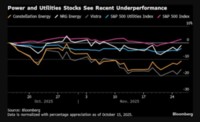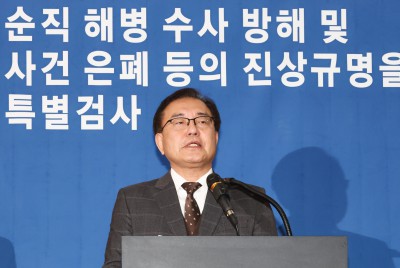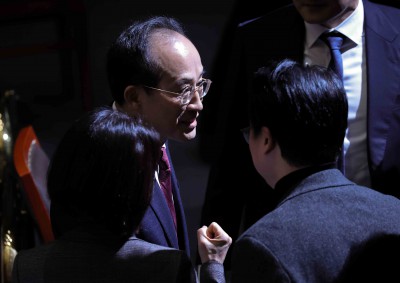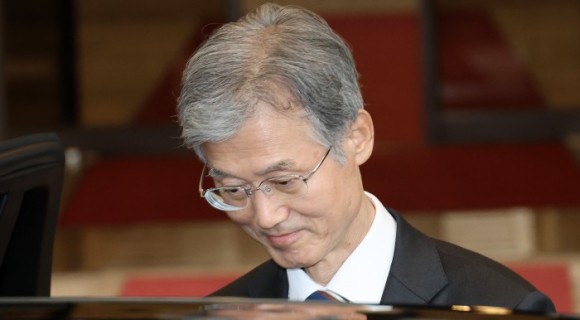William Poole*
President, Federal Reserve Bank of St. Louis
The St. Louis Gateway Chapter of the National Association for Business Economics
St. Louis
Feb. 11, 2008
*I appreciate comments provided by my colleagues at the Federal Reserve Bank of St. Louis. I take full responsibility for errors. The views expressed are mine and do not necessarily reflect official positions of the Federal Reserve System.
--------------------------------------------------------------------------------
Reflections
I have now attended my last FOMC meeting and, once editing of the meeting minutes is complete, I will no longer be a part of the FOMC process. I am in a transition period, soon to be an FOMC alum.
Nevertheless, before proceeding I want to emphasize that the views I express here are mine and do not necessarily reflect official positions of the Federal Reserve System. I thank my colleagues at the Federal Reserve Bank of St. Louis for their comments, but I retain full responsibility for errors.
It is natural for me to be in a reflective mood. My 10 years at the St. Louis Fed have been an incredible experience. I am soon to become an outside Fed watcher, as I was before coming to St. Louis, but my perspective will be different. That, in part, will be the subject of my remarks this afternoon.
The Strategy of Monetary Policy
One of the key lessons of the rational expectations revolution in macroeconomics was that we must think of every policy action as fitting within a policy strategy. I’ll now drop the word “strategy” to emphasize that a monetary policy is the general mode of central behavior that determines individual policy actions, or settings of the policy instruments. We need to think in terms of a policy for two reasons. First, the central bank—and every other decision-making body, public or private—should not act on the basis of whim. There must be some system of action, for, otherwise, how could we possibly know what individual policy actions to take? To learn from experience, we must be able to generalize and determine what circumstances call for what actions.
Second, for a central bank to achieve good outcomes for the economy, private decision-makers need to understand monetary policy and form sensible expectations about future policy actions. Almost every decision firms and households make depends in some way on expectations about the future. Inflation expectations are of particular concern to every central bank—or every responsible central bank, anyway. For firms and households, what goods to buy and when to buy them, the wages to pay and to accept, and the financial commitments to make depend on expectations about the price level in the future. Ideally, we take for granted the stability of the purchasing power of money and do not consciously consider inflation expectations in our decisions. The ideal state of taking for granted the purchasing power of money is incredibly important for a market system, and many things change when we start to incorporate consciously likely inflation in every decision. Equally important, our everyday decisions depend on expectations about the state of the real economy—whether the economy will be sagging or surging.
Outcomes for inflation and the real economy depend in part on what the central bank does, which in turn depends on central bank objectives. All this is familiar ground from work in macroeconomics over the past 50 years, but I repeat it so that I can tell a coherent story.
Much of my thinking over the past 10 years has been devoted to this subject. What is the right policy? That is, how should individual policy actions be fit into a general policy and not be, or appear to be, drawn at random? I have given a number of speeches on this theme. We clearly have made progress in thinking about policy actions in this general way, although there is a long way to go to make the policy reaction function more precise both to guide policy actions themselves and to make those actions more predictable to the markets.
Central Bank Communications
When I came to the St. Louis Fed, I was well prepared for my FOMC responsibilities in most respects. I knew a lot about monetary economics and monetary history. What I did not know was the art of communicating with the press and general public. The professional literature in economics was full of insights into the importance of private-sector expectations about monetary policy but essentially silent on how those expectations were formed, except for the assumption that expectations would not be systematically wrong and would converge to being correct eventually. Once I started fielding questions from the press after my speeches and talking informally before a wide range of audiences, I was part of the process of trying to establish correct expectations.
My general approach has been to speak primarily about the policy process rather than the specific situation facing the FOMC at its next meeting. I try to think of myself as speaking to portfolio managers who have a medium-term horizon rather than to traders who have a horizon measured in hours or a few days. I do not disparage traders—they perform an important function. Obviously, I have had internal information that would be of interest to traders but it would be entirely inappropriate—indeed illegal—to disclose confidential FOMC information.
Traders, portfolio managers and many others always want to know my forecast of what will happen at the upcoming FOMC meeting. My standard answer is that I do not forecast monetary policy decisions—my job is to participate in making those decisions. I confess that, initially, this response was something of a dodge, because I usually had a pretty good idea weeks in advance of what my own position at a meeting would be. However, over the years I have become impressed by how often my own position would change even in the days just before a meeting as a consequence of the arrival of new information, including staff analysis and sound arguments by my FOMC colleagues. It is not that my views are pushed this way and that by arrival of the latest economic data reports. What happens is that, from time to time, compelling new information does arrive. I hope that my policy outlook was stable even as my view on the appropriate policy action might change in the light of incoming data.
Thinking through the matter led me to a bit of research. Working with Bob Rasche, the St. Louis Fed research director, I had already studied the accuracy of market expectations about FOMC decisions using data from the federal funds futures market the day before each FOMC meeting. Given that those futures market forecasts have proven to be quite accurate, an obvious question was forecast accuracy longer in advance. Bob and I studied futures market predictions of the fed funds rate three and six months in advance and found that the accuracy was pretty low. The reason these forecasts have not been very good is that new information arrives that calls for a changed expectation on the monetary policy setting, both for the markets and for the FOMC. I not only became more aware of the need for me to keep my mind open but also thought it important to explain to my audiences how the policy process worked to be responsive to new information.
During the past 10 years, the FOMC has often discussed the nature of the policy statement to be issued at the conclusion of each policy meeting. A recurrent issue is the extent of forward guidance incorporated in the statement. When I joined the FOMC in March 1998, the committee’s practice was to release a statement only following a meeting at which it changed the federal funds rate target. The committee released meeting minutes shortly after the following meeting.
For some years, the committee’s practice had been to adopt a statement to be included in the minutes about symmetry in the directive. The directive issued to the Open Market Desk might be symmetrical, or have a bias toward either easing or tightening policy. By 1998, the bias had no practical effect on Desk operations but did indicate to those who read the minutes that the committee might be more inclined in the future to raise the funds rate target than lower it, or vice versa.
The minutes of the meeting of May 19, 1998, released in early July, contained this passage, which was typical of the symmetry language in 1998 and earlier years: “All the members who intended to vote for an unchanged policy at this meeting supported the retention of a directive that was biased toward restraint. In their view, current developments did not call for any policy action, at least at this meeting, but because they felt the risks were tilted in the direction of rising inflation, a policy tightening move, possibly in the near future, was a likely though not an inevitable prospect.” Two FOMC members, both favoring an increase in the federal funds target rate, dissented.
Although the FOMC was apparently on the edge of raising the target fed funds rate in the spring and summer of 1998, the environment then changed rapidly because of the financial market turmoil created by Long-Term Capital Management. The focus of the committee changed from a predominant concern over the risk of rising inflation to the financial turmoil, and the committee proceeded to reduce the target fed funds rate by a total of 75 basis points in three 25-basis-points steps. The previously stated bias toward tightening did not complicate the committee’s action to deal with financial turmoil; I recount the episode to illustrate how quickly conditions can change, overturning an earlier forecast of the likely direction of the target fed funds rate.
The FOMC continued to discuss the merits of providing formal guidance to the market on the likely direction of future policy. At its December 1998 meeting, the committee decided to release a statement whenever its view of the balance of risks changed materially.(1) The first such statement came in May 1999, when the committee left the funds rate target unchanged but indicated a bias toward raising the target in the future. The market did react to that statement—the committee thought the market overreacted. The committee raised the target by 25 basis points at its June 1999 meeting and by another 25 basis points at its August meeting but did not express a directional bias in either of the statements accompanying these policy actions.
At the time, I remember that I was very much in favor of the FOMC providing whatever guidance it could on its thinking about future adjustments in the fed funds rate target. If the committee were on the edge of raising the target, for example, why not reveal that information? Then the market could observe incoming information and decide whether strong data reports might complete the case for raising the target. That way of thinking about the matter would be similar to the way I thought about it.
The language to express this idea was changed from policy “symmetry,” which could include a bias toward raising or reducing the funds rate target, to the balance-of-risks language used more recently but expressing much the same idea. Several problems arose. One was that it was hard for the market to determine when incoming data made the case to change the funds rate target as suggested in the balance-of-risks statement. Another was that sometimes the data came in the other way, in which case the committee might want to change the target in the opposite direction to that suggested earlier. In principle, there should be no problem here because the committee made clear that the policy stance was always contingent on incoming information. Still, it just seemed awkward, to me at least, to change the funds rate target in the opposite direction to that indicated only a short time before.
I also became troubled by the following argument. If current economic conditions were such to suggest a high probability that future economic conditions would justify a future increase in the funds rate target, why not just raise the rate at the current meeting? Given lags in the effects of policy actions, the current policy had to be based on the future outlook. On the other hand, if the probability were low, would it serve the cause of good communication to state a bias? Wouldn’t it be more helpful to work harder to articulate the conditions under which the committee might change the target—to explain in more detail the nature of the policy rule or response function?(2)
Another problem with forward policy guidance was that a slow accumulation of information sometimes made the prior balance-of-risks language out of date, but it was not easy to take it out of the statement without sending a message, or seeming to, that a future policy adjustment in the other direction was contemplated. This problem arose in 2006. In August 2006, the committee kept the funds rate target unchanged, after increasing it by 25 basis points at each of its previous 17 meetings. However, the statement indicated a bias toward a further increase by saying this: “Nonetheless, the Committee judges that some inflation risks remain. The extent and timing of any additional firming that may be needed to address these risks will depend on the evolution of the outlook for both inflation and economic growth, as implied by incoming information.” Just ahead of the August meeting, the market had assigned a probability of about 0.8 on an FOMC target fed funds rate of 5.25 percent and a probability of about 0.2 on a target rate of 5.5 percent.(3)
Just after the August 2006 FOMC meeting, the market assigned these probabilities to the FOMC decision at its forthcoming September meeting: a target of 5.25 percent had a probability of about 0.78, a target of 5.5 percent had a probability of about 0.2 percent, and a target of 5.75 percent had a probability of about 0.02 percent. Although the FOMC retained the language that “firming may be needed” at subsequent meetings, over time the market lowered its probability that the FOMC would in fact raise the target rate. Ahead of the FOMC meeting of Jan. 30-31, 2007 the market placed essentially zero probability on any target rate above the prevailing rate of 5.25 percent.
At its meeting of March 20-21, 2007, the committee dropped the language referring to possible firming. Doing so made little difference given that the market had discounted the possibility of firming for some time.
I have recounted several of these episodes in some detail to illustrate the general issue. As a consequence of observing this process for 10 years, I have concluded that an FOMC attempt to provide forward guidance in the policy statement causes more communications difficulties than it solves. A key reason is that the economy is subject to more shocks and reversals than one might think. These shocks sometimes require more frequent policy actions than I would have thought likely when I came to St. Louis. At a minimum, changing economic conditions change the likelihood that the FOMC will want to adjust the fed funds target in the direction previously thought. Directional language tends to remain in the FOMC policy statement beyond the time it applies and removing the language creates the possibility of miscommunication. Every change in the policy statement leads naturally to market questions as to what the change means and whether the change is meant to provide a hint about the future direction of policy. To my mind, every time new language is inserted into the policy statement, there needs to be as much thought given as to how to exit from the language as to the rationale for inserting it.
I know that market participants are hungry for insight into the FOMC’s thinking and into the likelihood of future adjustments in the target federal funds rate. My judgment is that, most of the time, the committee cannot provide what the market wants because the committee itself is not clairvoyant. No one knows how the economy is going to evolve and how events will change the appropriate setting of the federal funds target rate. Most of the time over the past 10 years I had hunches about the policy direction I would be advocating at the next FOMC meeting, but “hunches” really is the right word. I had hunches and not settled convictions. Furthermore, the more I reflected and the more experience I accumulated, the more I realized how frequently surprise changes in conditions required that I change my hunches. I should not be misinterpreted as saying that I necessarily changed my view on the appropriate setting of the fed funds rate target. But when the information on which my prior hunch was based changed significantly, I had to start over, in a sense, to figure out whether the new information required a change in the policy stance.
Shocks and More Shocks
Ten years ago, my baseline approach was to think of the economy as growing along its full-employment growth path, or converging to that path, except when interrupted by occasional shocks. These shocks might have negative implications, like 9-11, or positive ones like the surge in productivity growth starting in about 1995. My view about shocks has changed: the shocks are continual and not occasional. Over the past 10 years, there have been many more months in which the economy was being hit by substantial surprises, or adjusting to them, than tranquil months. Crude oil prices have fluctuated over a tremendous range, as have equity prices and now home prices. Financial markets were shaken by Long-Term Capital Management, Enron and WorldCom and now the subprime mortgage mess. The terrorist attacks of September 2001 and then the U.S. invasion of Iraq in 2003 created uncertainty. The Y2K effort was substantial—in the event there was no event, but before the event there was uncertainty and risk.
So, surprises are normal and their implications for central bank practice are often—indeed ordinarily—unclear ahead of time. I try to separate surprises requiring central bank responses from those in which a response would be unhelpful. Market adjustments do deal with many surprises—markets are superb in this respect. Price signals alter decisions and equilibrate changes in goods supplies and demands.
The abstract framework I sketched at the outset provides considerable guidance. The question is always whether a policy response to a shock will help in achieving the goals of price level stability and a real economy close to its long-run growth path determined by productivity and thrift. Every policy action should be viewed as being logically derived from the general policy and the current facts. If a policy response itself would be a shock, because it could not be anticipated from the general policy rule, then that creates in my mind a presumption against the proposed policy action.
Other Matters
I have concentrated my remarks on monetary policy issues because that is the subject that has taken most of my time over the past 10 years. But there has been a lot more to my St. Louis Fed job than monetary policy.
I knew little about management when I came to St. Louis, at least in any formal sense. Nevertheless, the management side of being a CEO has turned out to be very interesting to me. I have learned a lot about good management practice, including the role of a strong board of directors, internal audit and other control processes, and the task of staying in touch with employees in all parts of the Bank at all levels. The St. Louis Fed has roughly 1000 employees. I find it mind-boggling that successful CEOs of much larger organizations are able to stay in touch with all the firm’s employees. I’ve used personal appearances before large groups of employees, internal media and selective meetings with small groups of employees. Although it is impossible to meet all employees in small groups, word spreads from the meetings that do take place. At least that has been my strategy.
Efforts to stay in touch with employees are important to provide clear expectations, motivation and promote a sound corporate culture. Although the Federal Reserve has a culture of very high integrity, reinforcing that culture is obviously worthwhile. The problem the Federal Reserve faces, in common with other not-for-profit firms, is that employees do not always push hard enough to get things done. We tend to suffer from paralysis by analysis and excessively high risk-aversion. My sense is that the St. Louis Fed has moved in the right direction in recent years. There is a lot more innovative activity at the Bank than outsiders can observe.
Concluding Comment
All aspects of my time at the St. Louis Fed have been interesting and rewarding. I have not had anything to do as burdensome as my exam-grading chores when I was an academic.
I leave the Fed at the end of next month with a deep appreciation of the competence and energy level of Fed employees. The Fed knows what it is doing, up to the limits imposed by the state of knowledge in economics. Professional standards are the very highest. People work hard and never let politics interfere with decisions. Simply put, this has been a fabulous experience for me.
--------------------------------------------------------------------------------
Footnotes
1. This passage was in the minutes of the FOMC meeting of Dec. 22, 1998: “Disclosure Policy. The members also discussed various issues relating to the timing and manner of releasing information about the Committee's policy decisions. A range of views was expressed, as at earlier meetings, on the desirability of releasing a statement routinely not only after those meetings at which there was a change in the stance of policy but also after meetings where the Committee altered its view of the direction of possible policy actions during the intermeeting period. Members who favored more announcements believed that such disclosure, by providing more information on the Committee's views of the risks in the economic outlook, generally would allow financial market prices to reflect more accurately the likely future stance of monetary policy. However, other members were concerned that such announcements often would provoke market reactions. As a consequence, the Committee would become less willing to change the symmetry in the directive, and a policy of immediate release might therefore have adverse repercussions on the Committee's decision-making. Nonetheless, the members decided to implement the previously stated policy of releasing, on an infrequent basis, an announcement immediately after certain FOMC meetings when the stance of monetary policy remained unchanged. Specifically, the Committee would do so on those occasions when it wanted to communicate to the public a major shift in its views about the balance of risks or the likely direction of future policy. Such announcements would not be made after every change in the symmetry of the directive, but only when it seemed important for the public to be aware of an important shift in the members' views. On the basis of experience with such announcements, the Committee would evaluate later whether further changes in its approach to disclosures would be desirable.”
2. These considerations and others led to two speeches, “Monetary Policy Rules?” (Federal Reserve Bank of St. Louis Review Vol. 81, No. 2 March/April 1999) and “The Fed’s Monetary Policy Rule” (Federal Reserve Bank of St. Louis Review Vol. 88, No. 1 January/February 2006).
3. I am relying on the probability estimates reported by the Federal Reserve Bank of Cleveland derived from trading in options on federal funds futures. [http://www.clevelandfed.org/research/policy/fedfunds/archives.cfm] I have read the probabilities off the Cleveland Fed charts; these approximations are close enough for my present discussion.

























